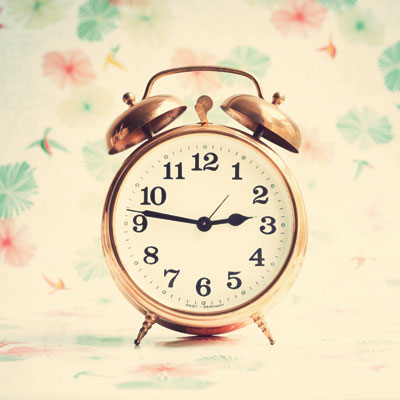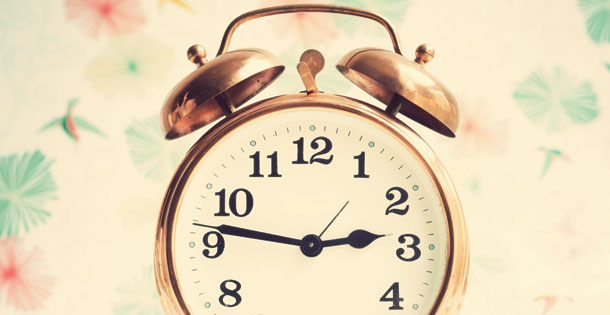
In 2006, the governor of Indiana, Mitch Daniels, switched our state to daylight saving time, which caused everyone to faint dead away. More than a few Hoosiers predicted the end of the world, which hasn’t happened yet, but we are patient, so we are willing to wait.
Spring forward, fall back. We’ll move our clocks an hour forward on March 9 at 2a.m., though I will probably hurry things along and move our clocks forward just before I go to bed. This is no small undertaking. We have 13 house clocks, four car clocks, four wristwatches, a stove clock, a microwave clock, a garage clock, and a clock on my motorcycle. Since I only change my car clocks twice a year, I have to look up how to do it each time. Daniels is no longer governor, so he presumably has to change his own clocks now that he doesn’t have a butler to do it for him. I find it deeply satisfying when politicians have to live under the same burdens they place on us. I bet two days a year, Daniels rues the day he fiddled with our time.
Despite my twice-yearly struggle, I’ve become a fan of daylight saving time. In the fall I get an hour’s extra sleep the day we change clocks, and then there is a stretch of summer days when the sun doesn’t set until well after 9p.m. The parents of small children hate daylight saving time because it’s impossible to get a kid to bed when it’s still light outside, and then they’re up at midnight when the sun rises. The owners of drive-in theaters don’t like it either. By the time it’s dark enough to show the movies, most people are in bed. It’s rumored Arizona rejected daylight saving time because its senate majority leader in 1967 owned a chain of drive-in theaters, though I’m sure that had nothing to do with his decision.
Since I’m a fan of daylight saving time, I was surprised when it repaid my appreciation by giving me cancer. Basal cell carcinoma, to be precise, which is caused by too much sun. It doesn’t take a genius to see the connection. For 45 years, I breezed along, healthy as a horse, never sick a day in my life, but then we went on daylight saving time and the next thing you know I had to have a chunk of my right ear lopped off. At this rate, I won’t have any body parts left by the time I’m 60.
No matter the sleight-of-hand we perform with clocks, we’ve been unable to achieve the one thing most of us want, which is more time. When you think how long the 24-hour day has gone without a promotion, it doesn’t seem unreasonable to bump it up to 26 hours. In fact, it’s way overdue. That would give us one extra month a year. I would like my extra month in the summer, please, right between June and July.
Keeping alive the tradition of naming months after gods, emperors, and obscure foreign words, I would name the extra month Philip, which in Greek means “lover of horses.” Horses have done a lot for us, and it’s time we named a month after them. It just occurred to me that is my name, but I assure you that had nothing to do with my choice.
New York City adopted daylight saving time in 1918, 88 years before Indiana. Why is it things always start on the coasts and take forever to reach the Midwest? Electrical power began in New York in 1892. Not even our storms had electricity then. It was the same thing with hot dogs. People in New York City were enjoying them in the 1870s, but I didn’t even get to taste one until the 1960s.
They now make household clocks that are linked to the cesium fountain clock at the National Institute of Standards and Technology facility in Boulder, Colorado. The clocks automatically adjust to daylight saving time. The cesium fountain clock measures time by the vibration of a cesium atom and is accurate to one second every 100 million years. We don’t even have atoms in Indiana, but when we finally get them, I’m going to buy a clock I won’t have to adjust twice a year.
Become a Saturday Evening Post member and enjoy unlimited access. Subscribe now




Comments
Poor Phil hasn’t learned about sunscreen yet!